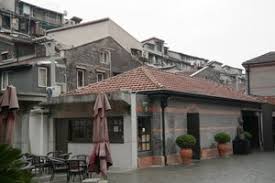Hi!!! Yesterday, I had some pretty insane crab ….. at a subway station. Well, there’s a reason for that. Right after lunch, we were off to start a new series on the blog: Cultural Shangahai
From the centuries old buildings on Waitan to hutongs, Shanghai is renowned for it’s cultural history. I’ve always wanted to do some exploring, but between classes, papers and general HS stress, I’ve never had the motivation time. Well, it’s summer time, so let’s explore.
With so many places to choose from, the question was where should we start? By chance, I found a new WWII audio book… which got me thinking….. Shanghai was a major port city, did it play any role?
I did a quick search, and discovered this:
Shanghai’s Jewish Refugees
Turns out, Shanghai played a pretty major role in the holocaust. From 1936- 40, Shanghai accepted over 30000 refugee escaping the Nazi terror. But why would so many people come to a foreign city with a reputation for dirt and crime invaded by Hitler’s ally? Because it was the only city that accepted them. That’s right, while the rest of the world turned away the ships, Shanghai welcomed them.
So, ship after ship entered the harbor. They were quartered in the Hongkou district.
With so many people, resources were tight and living conditions were worse than terrible. One documentary said that space at the shelters was so tight that 1 family had to share a bunk and had to tear bedsheets for separators. Honestly, conditions at the initial shelters weren’t much better than most early concentration camps.
However, despite such hardships, the refugees learned to adapt. They built schools, synagogues, clinics, a German language newspaper and of course… food. Soon, this place became dubbed Shanghai’s little Vienna.
Then… the Japanese came. They had been in Shanghai since 1938, but ignored the foreign- owned concessions (Little Vienna technically belonged to the British). However, after Pearl Harbor, nowhere was safe. The Germans even sent over a few representatives to help with “the Jewish problem”. Luckily, the Japanese weren’t the Germans. Sure, the Jews were confined to a “ghetto”, but at least they were safe for the rest of the war.
So, where’s little Vienna and it’s inhabitants now?
Unfortunately, there’s not much left. After WWII, the Chinese Civil War part two started, and most of the “refugees” moved out and took their culture (and food) with them.
The Museum
The refugees may have left and taken the food with them, but they haven’t been forgotten. In 2007, the city government renovated the Old Moshe Synagogue and some of the surrounding buildings and created the Shanghai Jewish Refugees Museum.
It’s fairly small but absolutely packed with information. There are 5 exhibition “halls”, each detailing a different part of the Shanghai’s Jewish story including mementos and even a sample “house”
 Can you believe a family of 4 lived here?
Can you believe a family of 4 lived here?
However, the coolest part is this wall and statue:
While most walls are in memory of the dead, this one celebrates those who were saved. Apparently a lot of the “survivors” and their family still come and visit
Note: The museum offers amazing tours on the hour, but they’re in Chinese
Cramming in all that history, we were pretty pooped, so we decided to call it a (very successful) day. Definitely one of the most fascinating and inspiring places I’ve been to in Shanghai. I hope everyone gets a chance to visit!
Next week, I’ll be visiting one of Shanghai’s oldest tea houses, so tune in to see what Queen Victoria was served when she visited!
Until next time, Bye!







Nice! You are really foodie who loves history. 你是一个热爱历史的吃货😃😃
LikeLiked by 1 person
very educative, thanks for sharing
LikeLike
Thanks!
LikeLiked by 1 person
Good to know this part of history!
LikeLike